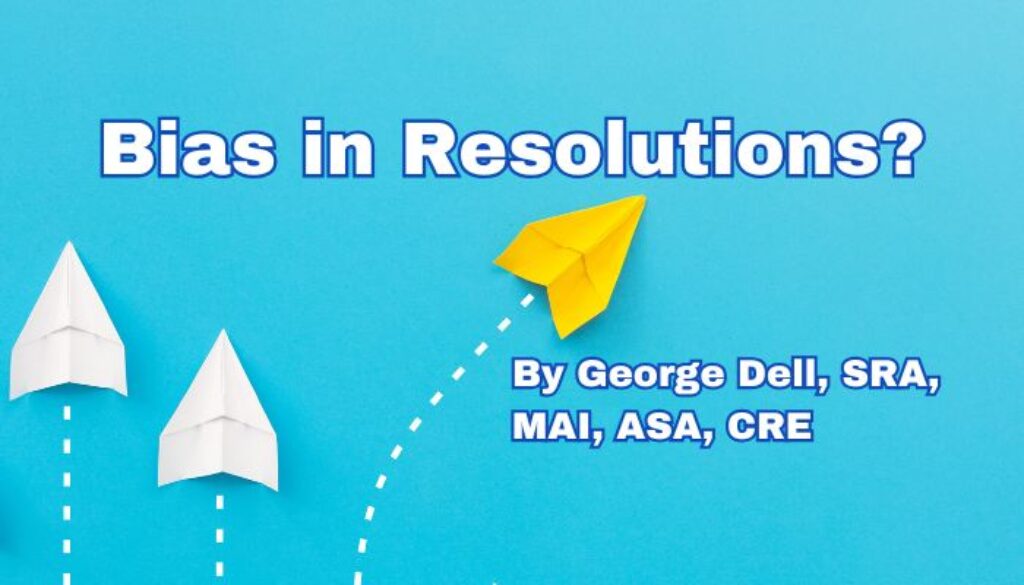In this time of New Year’s resolutions, bias has been much in our consciousness. Bias Pt 3.
As a new appraiser, I knew little about bias. I did know that appraisers were expected to be unbiased in their opinions. It seemed simple. Be fair, and don’t let anyone bribe you to give the ‘value’ they expect.
Then I learned some other stuff. Actual practice. The pressure. The expectations. The reality.
Little did I expect that the appraiser’s life is a constant battle between the internal pilot, the consciousness at the helm of the ship, and the push and shove of the tugboats at the side and even behind, pushing faster. Some tugs trying to change my direction. Some slam into my side. Some telling me at which port to arrive.
Can I resolve to be unbiased?
It appears I can have good intentions, and a desire to be ethical. And yet, I am told it is impossible to be wholly unbiased. Because I am human.
Bias has a primal function to protect. It can help to make instant decisions when there is no time to think. Yet it can cause great harm when there is no time to think. This is a quandary.
So good outcomes and bad outcomes can come from context, or from our prior expectations. It all depends on how we recognize things. Cognition.
Cognitive bias is defined as “a systemic error in thinking, that affects our choices and judgments.” Our experiences shape us. We learn and adapt from these experiences. As children, we learn and grow, protected from some bad, even deadly results – by our parents and teachers and other authority figures.
We can learn from others, teach ourselves untrue things, and reinforce them by attraction to those who agree with us. They are ‘safe.’ The others can be dangerous. They cannot be trusted. How could they be so wrong?
Cognitive bias can negatively impact our relationships, our clients, and even society in general. We can be conscious of our bias. “fudge the value to keep the client.” Just a little bit. Heck, we are not held to a standard of reliability. We are held to a standard of believability. “Worthy of belief” is the mantra of appraisal standards. Not reliability. Not risk minimization. Worthiness.
The most common conscious, and unconscious source of appraisal bias is called ‘anchoring.’ Anchoring is the tendency of the human system to approach the first result or number given. In practical experience as an appraiser, it is easy to see this effect. In fact, the ‘sale price’ in itself is evidence of its own validity! Easy to justify. Correct much of the time. Until it isn’t.
This ‘anchoring’ bias has been subject to psychological blind tests, even with arbitrary numbers. People are shown a number (say ‘7’). Then shortly after, they are asked to select a number randomly from one to 10. Guess what. The bias toward ‘7’ is dramatic.
This is not intentional bias. It is unintentional. It is unconscious.
Personal bias is personal. Much of our systemic bias is social, governmental, and regulatory in nature.
In coming issues of this “analogue blog”, we consider forms of bias and also ways individuals and society (our regulators and other organizations) – can work toward – resolving the problem.
